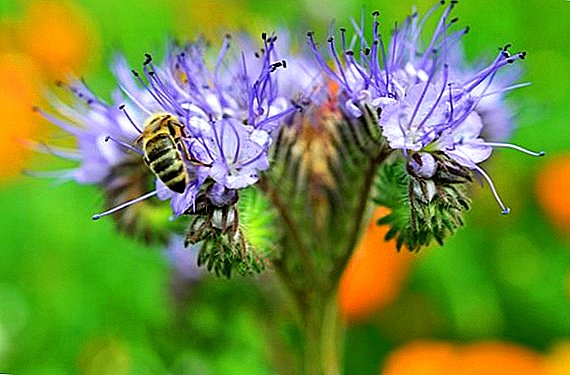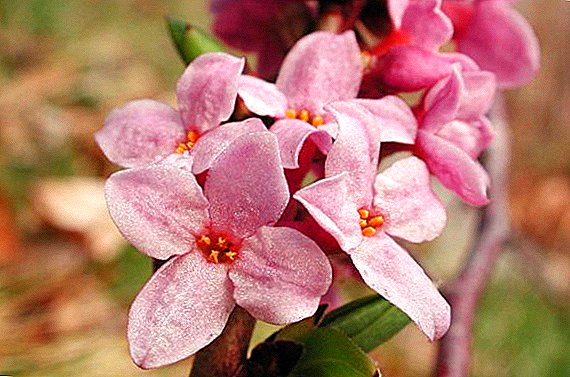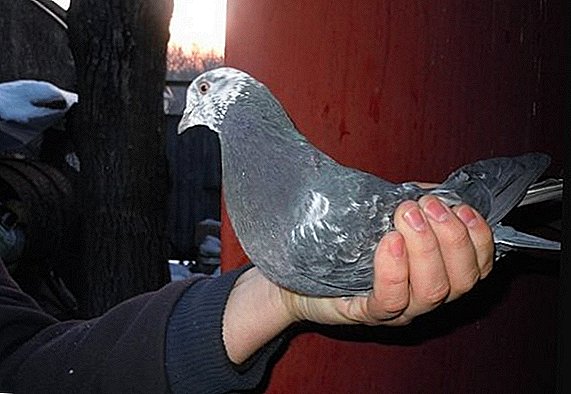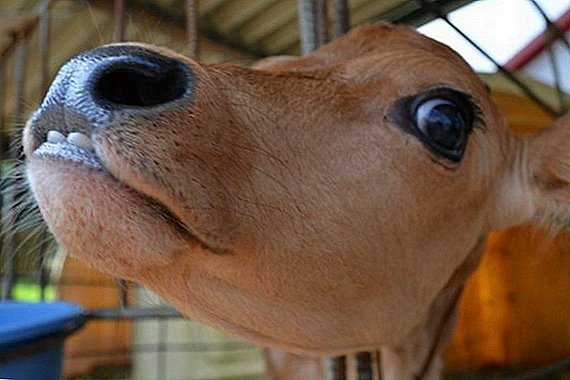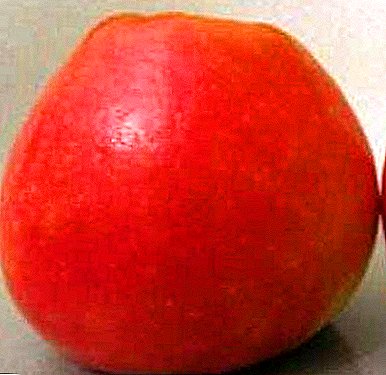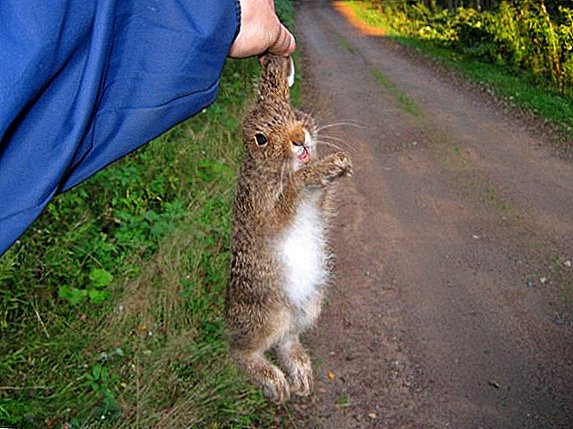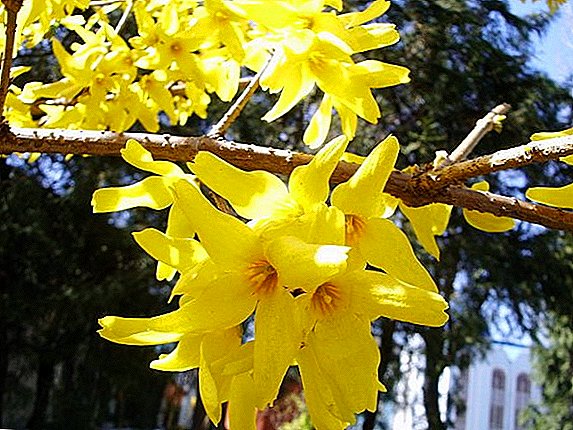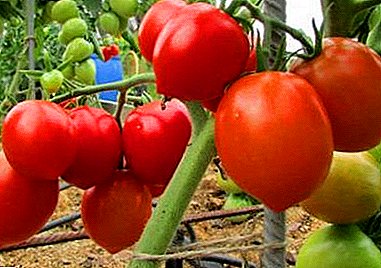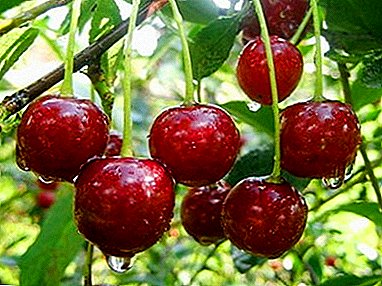
Among the huge number of cherry varieties is very difficult to navigate and choose a good tree for your site.
First of all, pay attention to winter hardiness, self-fertility, yield varieties and its resistance to major diseases of the cherry.
Relatively young and uncommon cherry variety Lighthouse. You will find out what is remarkable about the cherry lighthouse and whether it is suitable for planting in the country, a description of the variety and photos further in the article.
Breeding history and breeding region
 It turned out this variety in the process of painstaking work on the cross-pollination of several annual seedlings Michurin varieties of cherries.
It turned out this variety in the process of painstaking work on the cross-pollination of several annual seedlings Michurin varieties of cherries.
The variety is home to Sverdlovsk (now Yekaterinburg). Breeders at the horticultural station were engaged in breeding: S.V. Zhukov and N.I. Gvozdyukova.
The lighthouse was zoned in 1974 in the Middle Volga region, but quickly spread throughout central Russia.
Because of its good frost resistance, this variety is also grown in Baltic States and Belarus. In Soviet times, the lighthouse was widely used in industrial gardening.
The following varieties of Volochaevka, Chokoladnitsa and Lyubskaya also demonstrate good winter hardiness.
Appearance of cherry lighthouse
Consider separately the appearance of the tree and its fruits.
Tree
Cherry variety Beacon is low sprawling bush plant with a rare oval crown, not growing higher than 2 m. The buds are sharp, small, not adjacent to the shoots.
The leaves are oval, strongly elongated, dark green, shiny, with sharp tips and fine teeth on the edges.
The flowers are white, grow in inflorescences of 3 pieces each and they bloom quite late, in early June. Petals are located loosely. Grow mainly on young, annual twigs.
Shrubs are also generous cherries, Moscow Griot and Zhukovskaya.
Fruit
 The berries are very large, weighing about 4-6 grams, dark red, round, slightly flattened on the seam side. The flesh is bright red, extremely juicy, with a great sweet taste.
The berries are very large, weighing about 4-6 grams, dark red, round, slightly flattened on the seam side. The flesh is bright red, extremely juicy, with a great sweet taste.
Large varieties can boast such varieties Podbelskaya, Vyanok and Morozova Dessert.
The sugar content in fruits is high and the acidity is low. The bone is oval, wide, light brown, very easily separated from the pulp.
Lighthouse - universal grade. It is equally well suited for both fresh consumption and for boiling jam, compote or freeze. The berries of this variety have a great dessert taste and beautiful appearance.
A photo





Characteristics of a variety
Beacon begins to bear fruit already 3-4 year after disembarkation. The bush is quite durable, with proper care it can give good yields over 30 years or more.
 Berries ripen at the same timeand this process takes place from late July to early August. Fruits are not prone to shattering, but under certain conditions they can crack. therefore the crop is harvested as it ripens.
Berries ripen at the same timeand this process takes place from late July to early August. Fruits are not prone to shattering, but under certain conditions they can crack. therefore the crop is harvested as it ripens.
In the middle latitudes, the yield of this variety is quite good. On average, from one adult bush can be collected about 10-15 kg of berries. In warmer climates and yields will be higher.
Such varieties as Black Large, Chernokorka, Uralskaya Rubinovaya and Rossoshanskaya Black have high yields.
Winter hardiness at the Beacon is also not bad. It tolerates frosts to -30-35 C. But at lower temperatures buds and shoots may freeze. The variety tolerates a long drought.
Cherry Lighthouse - partly samoplodny grade.
For higher yields recommended to plant next varieties necessary for pollination: Nizhnekamsk, Toiler of Tartary, Shakirovskaya.
For all these advantages, there are a number of disadvantages. At high humidity grade often affected by fruit rot and coccomycosis.
Of the pests, the greatest danger to Mayak is slimy sawfly and cherry aphid. But with proper care, timely processing and pruning, these troubles can be minimized.
Planting and care
 Due to the fact that the lighthouse is not very winter-hardiness, the place for landing is chosen warm, bright and well protected from the wind.
Due to the fact that the lighthouse is not very winter-hardiness, the place for landing is chosen warm, bright and well protected from the wind.
The soil should be light, well drained, sandy or loamy.
It is impossible to plant this variety in the lowlands, and in places with close occurrence of groundwater.
At the same time it is necessary to plant about three varieties of pollinators, while strictly observing landing scheme: 2 * 2.5 m.
The best time for planting is spring. The soil should warm up well. Lime the selected site should be in the fall. For this you can use wood ash, about 500-600 grams per square meter.
Basic soil preparation is also carried out in the fall, but not earlier than 2-3 weeks after liming.
The earth is not too deep (on the bayonet of the shovel) dug up, choose the grass and add 15-20 kg of humus, 100 grams of superphosphate and about 50 grams of potassium sulfate per square meter. m
After that, proceed to the preparation of planting holes. Dig them to a depth of 40-50 cm and a diameter of about 70 cm. Fill the pit with a mixture from humus, ash, mineral fertilizers (potassium sulfate and superphosphate) and the upper layer of the earth.
Drive a peg into each pit and place a seedling, while trying not to dig the root neck. The ground is well trampled down, a fairly deep hole is made and a small earthen bank is built around it. After planting under a bush poured a bucket of water and mulch dry humus.
Despite the high drought resistance, young plants need water at least 3-4 times a season.
 After each watering, the soil is carefully loosened and sprinkled with a thick layer of mulch. We must not forget about the removal of weeds in pristvolnom circle.
After each watering, the soil is carefully loosened and sprinkled with a thick layer of mulch. We must not forget about the removal of weeds in pristvolnom circle.
For the second and subsequent years to these procedures feed and preventive treatments for diseases are added.
The first dressing is done in early spring and nitrogen fertilizers are used.
In autumn, they dig up the ground around the bush and carry out potash-phosphorus top dressing.
Young bushes are watered in early June, 2 buckets on the plant. Fruiting cherries are best watered during the ripening of berries, no more than 20 liters per bush.
The frequency of irrigation depends on the weather and soil moisture. Variety Beacon does not like waterlogging, and it is necessary to water it as needed.
Pruning is carried out only in the spring, before the swelling of the kidneys. An adult spray cherry should have no more than 8-12 main branches.
This grade, prone to growth and thickening of the bush, therefore pruning will be to remove extra branches and root growth. But in no case can one shorten annual shoots.
As for the rejuvenating pruning, it is carried out 10-12 years after landing. Remove all dried, diseased or frozen branches.
Diseases and pests
 Cherry Variety Lighthouse very often affected by coccomycosis and fruit rot. Therefore, it is important not to forget about the prevention of these dangerous diseases.
Cherry Variety Lighthouse very often affected by coccomycosis and fruit rot. Therefore, it is important not to forget about the prevention of these dangerous diseases.
In addition to diseases, pests are a great danger for this variety: slimy sawfly and aphid.
Coccomycosis - extremely dangerous fungal disease for cherries. It is expressed in the appearance of small red spots on the upper side of the leaves.
They grow very quickly and cover the leaves and shoots, and then the berries.
Affected leaves dry and crumble. If time does not begin treatment, the plant will weaken and may simply not survive the winter. It is important to prevent the occurrence of this disease.
As a protective measure you can try in the fall. spray a bush with very concentrated nitrogen fertilizer, making sure that it does not get to the roots. All affected branches and shoots, as well as the fallen leaves are removed and burned.
Time-pruning also reduces the risk of disease. If you can not avoid coccomycosis, then spend treatment with special fungicides.
Resistance to coccomycosis are Podbelskaya, Kharitonovskaya and Minx.
Fruit Rot causes cherry not less harm. Unlike coccomicosis, this disease affects only berries. It begins with the appearance of small spots that grow rapidly and lead to rotting fruit.
With the appearance of this disease, all rotten berries are removed and burned. After harvesting the bush is treated 1% Bordeaux mixture. Can be used copper oxychloride solution before and after flowering.
Cherry sawfly
To combat it, use different insecticides ("Iskra-M" or "Kinmiks"). Not more than 2 liters of water solution per bush.
Cherry aphid It also feeds on cherry leaf juice, but it appears at the very beginning of bud break. This insect hibernates on the branches and shoots of the plant.
To get rid of aphids use the same drugs as in the fight with the sawfly.
"Spark" is used at the beginning of leaf blooming, and "Kinmiks" - after flowering. Prepare the solution according to the instructions and spend about 3 liters per bush.
The cherry variety Beacon has many advantages, but also many disadvantages.
The advantages of this variety include:
- large fruits;
- good yield;
- durability of the bush;
- excellent taste of berries;
- drought tolerance;
- partial self-fertility.
The downsides are:
- not high winter hardiness;
- tendency to defeat fruit rot and coccomycosis;
- susceptibility to pest attack.
 But despite this, the cherry variety Lighthouse is very well suited for both industrial and private gardening.
But despite this, the cherry variety Lighthouse is very well suited for both industrial and private gardening.
It is important to carry out preventive processing, pruning and fertilizing plants.
In this case, the chance to encounter diseases and pests will be minimal.


